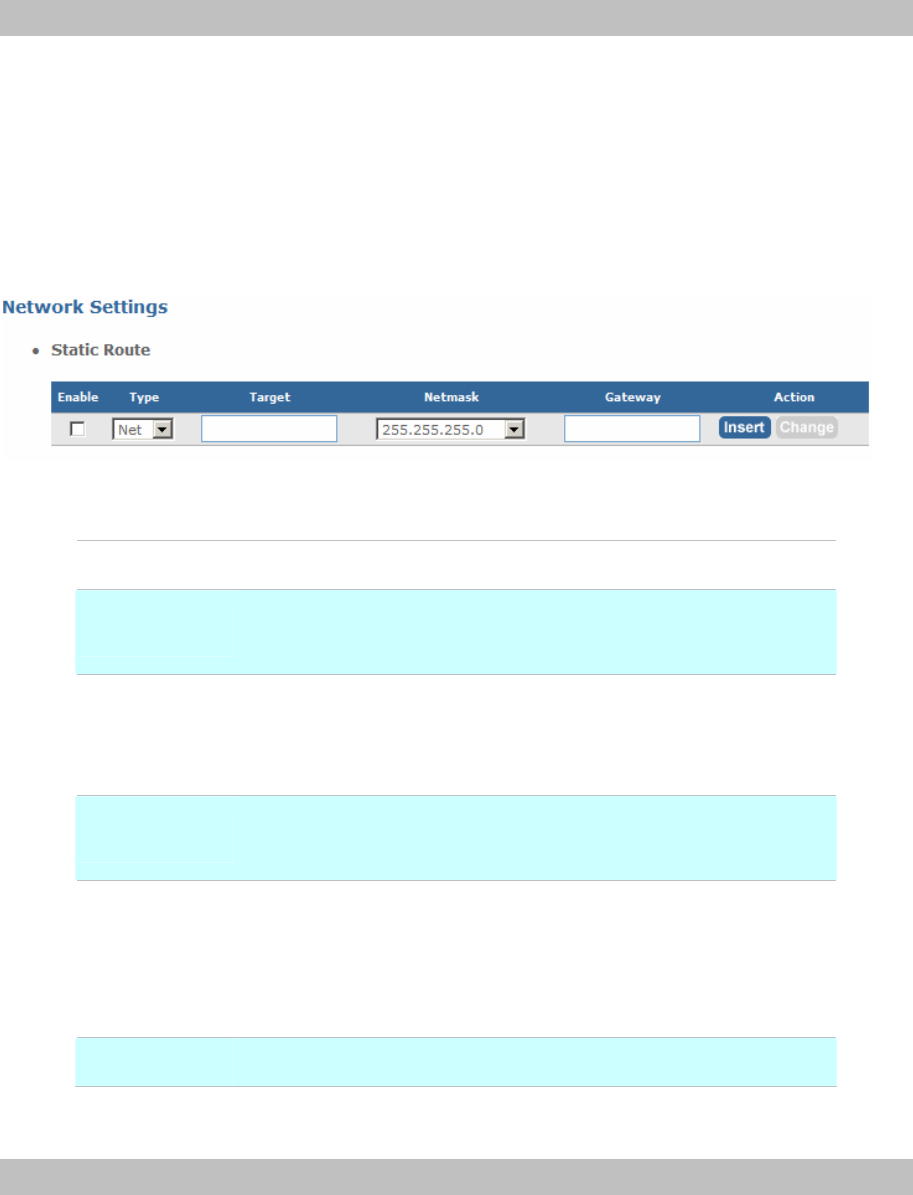
Static Route
Static routes are special routes that the network administrator manually enters into the router
configuration for local network management. You could build an entire network based on static routes.
The problem with doing this is that when a network failure occurs, the static route will not change
without you performing the change. This could be IP-PBX if the failure occurs when the administrator is
not available.
The route table allows the user to configure and define all the static routes supported by the router.
Figure 4-12. Static route settings
Enable
Enable/Disable the static route.
Type
Indicates the type of route as follows, Host for local connection and
Net for network connection.
Target
Defines the base IP address (Network Number) that will be
compared with the destination IP address (after an AND with
NetMask) to see if this is the target route.
NetMask
The subnet mask that will be AND'd with the destination IP address
and then compared with the Target to see if this is the target route.
Gateway
The IP address of the next hop router that will be used to route
traffic for this route. If this route is local (defines the locally
connected hosts and Type = Host) then this IP address MUST be
the IP address of the router.
Action
Insert a new Static Router entry or update a specified entry.
Table 4-5. Static route description
NAT
NAT (Network Address Translation) serves three purposes:
1. Provides security by hiding internal IP addresses. Acts like firewall.
2. Enables a company to access internal IP addresses. Internal IP addresses that are only available
within the company will not conflict with public IP.
3. Allows a company to combine multiple ISDN connections into a single internet connection.
47


















